GrayBull Golf Course: Full Circle in the Sandhills
The Old and the New
By some estimates, there are over 10,000 golf courses in North America. Compare that with some 550 golf courses in Scotland. One would assume that the sheer difference in volume would ensure that crossing the pond may not be necessary to enjoy a round, but there are other, more intangible factors at play: the history of playing where the game was born, familiarity with the Open Championship venues, and iconic moments that occurred on those storied links. Ask any golfer, and they can likely name small towns in Scotland like St Andrews, Dornoch, or Carnoustie, the place replaced in the golfer’s imagination by a stretch of historic grass on which to test themselves.
More than anything, though, the intercontinental allure of linksland is embodied in its name: the land itself makes the difference. Many acolytes of the game are seeking golfing authenticity, an alternative to the North American propensity to move tons of dirt to achieve an artificial perfection. John McPhee, writing in The New Yorker, says of this difference that “in Scotland, the natural courses come in three main forms: the linksland courses by the sea, the moorland courses everywhere, and the forested parkland courses of the interior, some involving eskers, drumlins, and lateral moraines, but all the result of various glacial effects. In the United States for almost a century land has been shaped with bulldozers to imitate those forms.”
Logical, then, is the current trend in American golf course design that adheres to the Scottish model, finding land that naturally suits a golf course rather than creating it. Foremost in this new era are golf course architects like Tom Doak, Bill Coore, Ben Crenshaw, and Scottish native David McLay Kidd.
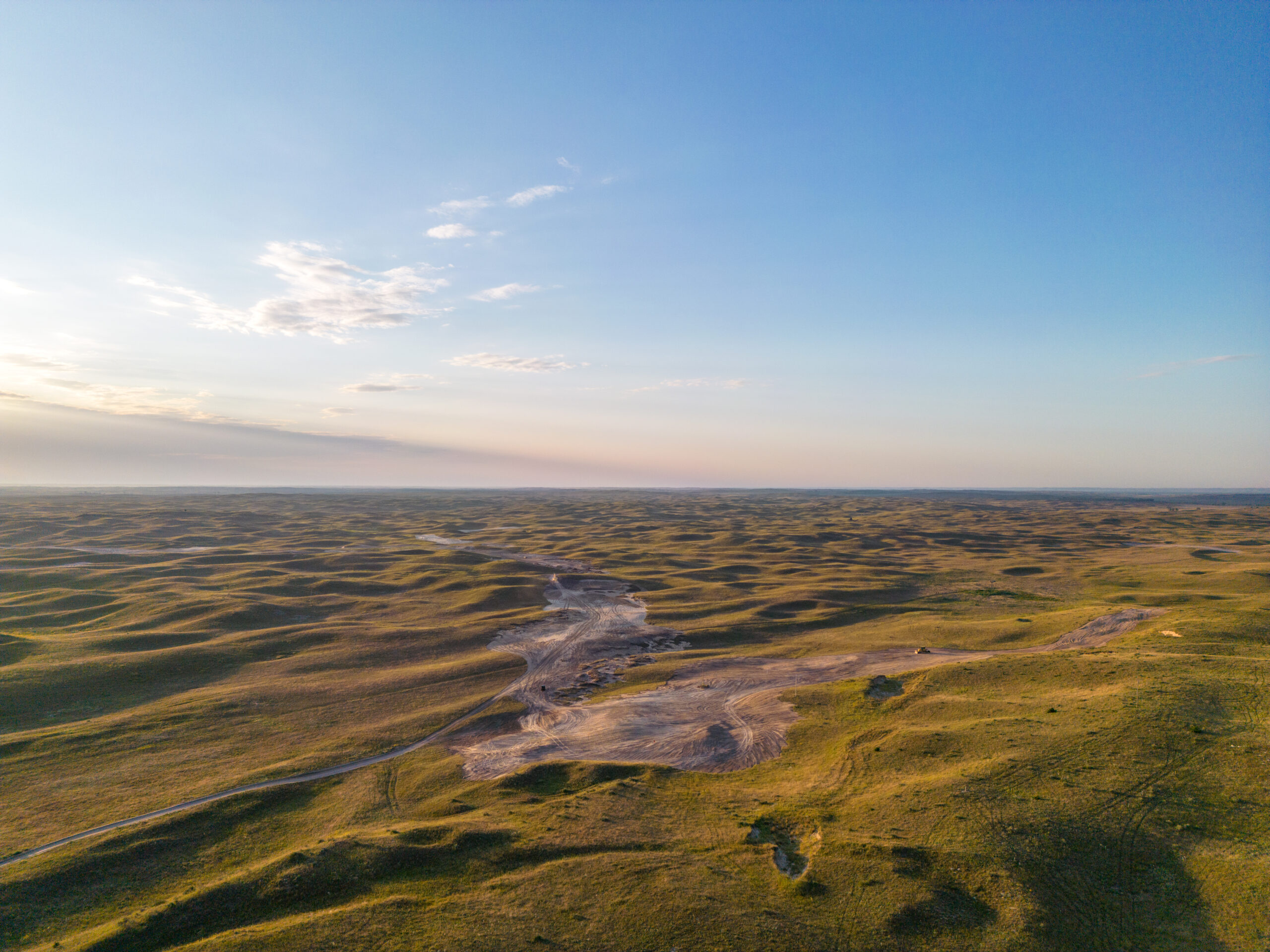
Future 1st and 2nd hole at GrayBull in Nebraska.
Landing Zone
Links golf zealots are unanimous in their praise for one element of that terrain: the sound. They can describe in detail the hollow thump made when a shot is struck purely from links turf. The coastal areas that make up linksland are rolling plots of terrain with particularly sandy soil. This means drainage is never an issue, and it creates the firm soil golfers notice underfoot. The undulation, as well as the salt content from proximity to the ocean, make this land unsuitable for traditional uses like housing or crop cultivation. One man’s trash is another man’s treasure, however, and linksland has one use for which it has no equal: golf courses.

Littlehampton Golf Club, England, is an example of a course built on linksland.
The most iconic golf courses in the world are built on linksland, and for as long as golf has been played elsewhere, players, architects, and everyone in between has been looking for ground that can match the links of the British Isles. In North America, where a host of Scottish golf pros have immigrated to spread and develop their game, linksland is rare, so these pros were unsuited to the challenges of the new terrain. In his profile of golf course architect Robert Trent Jones, Herbert Warren Wind says, “Once separated from the dune terrain and forced to resort to artificial hazards instead of natural ones, the Scots lost their instinct for what was right and what was wrong. Thus, our early courses were embellished with railroad tracks, stone quarries, stone walls, chicken coops, and grandstands, for the pioneer American golfers had an idea that these synthetic hazards added flavour to the sport and, indeed, had it all over the dull natural hazards.”
Time and criticism have undermined this American approach. Moving mountains of earth to simulate natural landscapes began to be seen as foolish, and golf course developers and architects started looking for land more suited to minimalist design, where a designer could let golf holes reveal themselves in the contours of the site. These architects, mostly American, were not only looking to the designs of Old Tom Morris on the coasts of Scotland but also to do what the early Scots who spread the game to North America could not: lay out their courses using the natural features of the land. They found what they were looking for in unexpected places.
Honestly, It’s not for Everyone
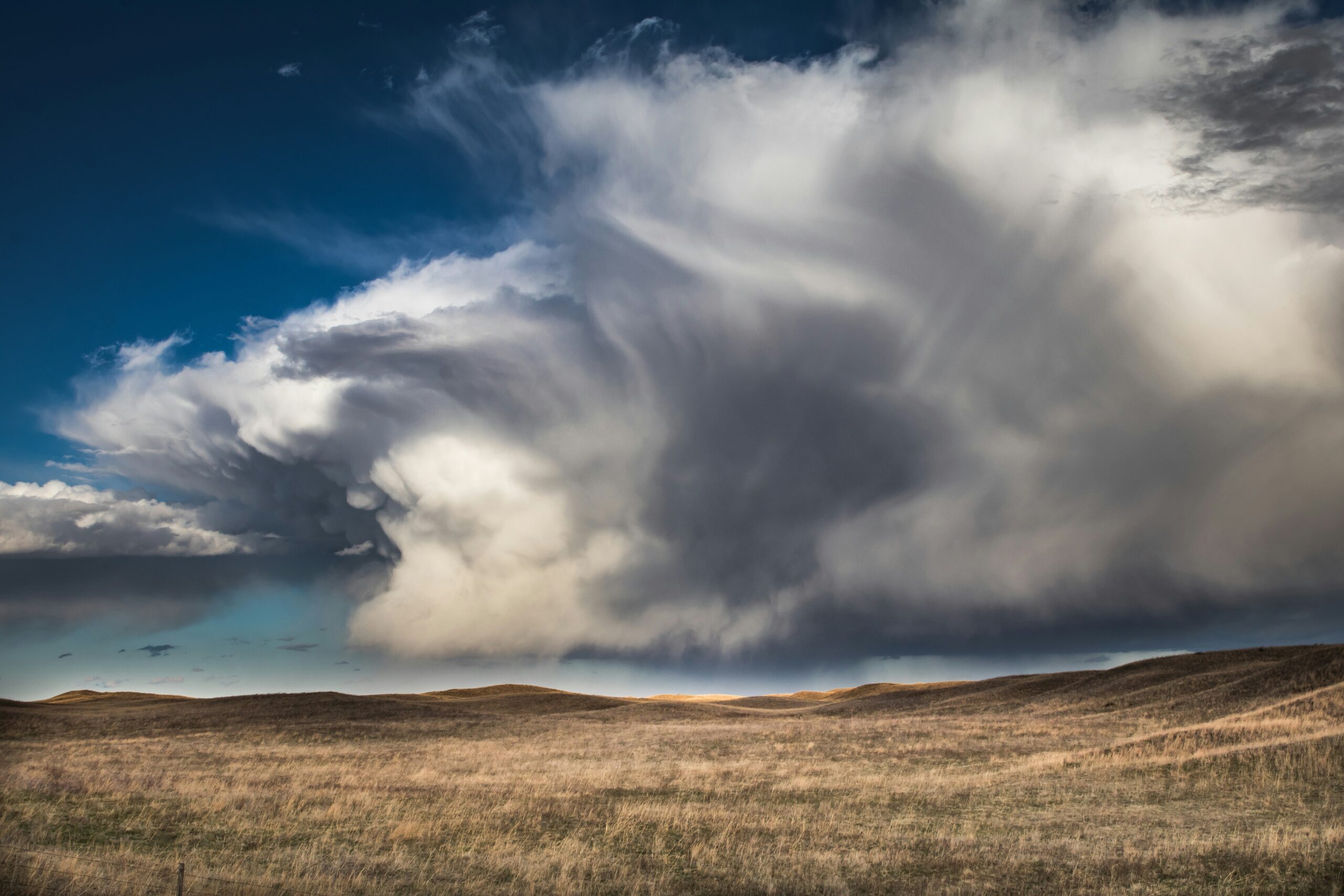
The landscape of the Nebraska Sandhills.
In the centre of Nebraska, the settlement of Maxwell is bypassed by Interstate 80 and is almost a four-hour drive from Omaha. This tiny village is the site of new, high-profile golf course—GrayBull, opening in late summer 2024—thanks to its location on one of the continental United States’ most interesting ecosystems: the Nebraska Sandhills.
In contrast to the coastal deposits of sand that formed linkslands, the sandy dunes of Nebraska are the result of wind eroding the Rocky Mountains. Over millions of years, the sand built up to form the grass-stabilized dune systems of the Sandhills. As a result, the area is now the largest sand dune system in the western hemisphere, with abundant grasslands and the added benefit of a large aquifer.
The Sandhills are home to over half a million cattle, a significantly smaller human population, and a few world-class golf courses. Among these are Dismal River, Prairie Dunes, and Wild Horse, but one Nebraska layout takes the biscuit: Sand Hills Golf Club in the town of Mullen. Architects Bill Coore and Ben Crenshaw are lauded for bringing about a second golden age of American golf course design. They famously said they moved a “teaspoon” of dirt to create the course. A private endeavour that closes for eight months of the year, Sand Hills is nevertheless consistently ranked among the top 10 golf courses in the nation.

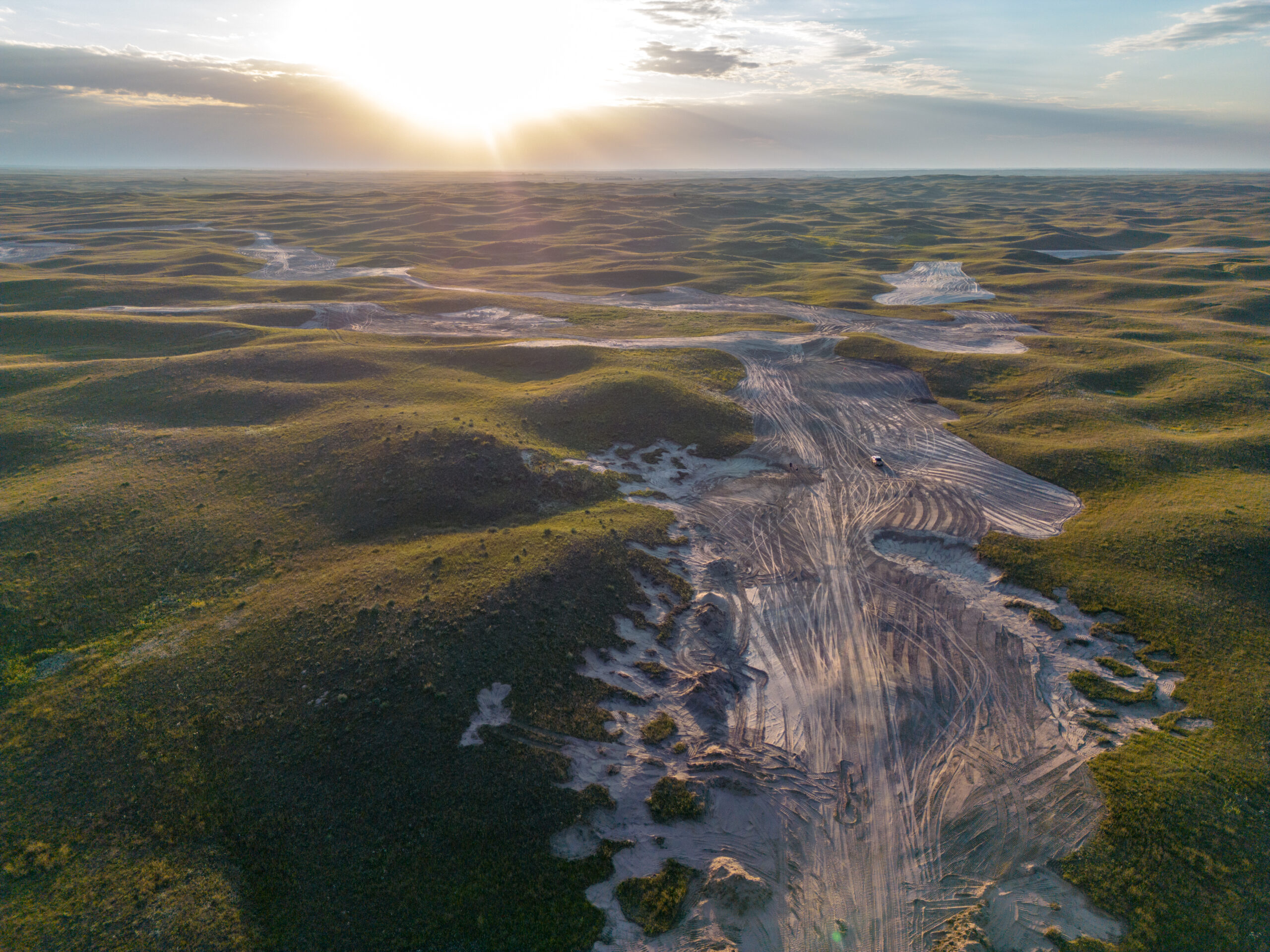

Work continues on the site of GrayBull Golf Course near Maxwell, NE.
But Sand Hills’ true legacy, like the famous quote about The Velvet Underground, may be the others that it inspired. A member of Sand Hills, Mike Kaiser, realized that despite being remote, the golf course still attracted a crowd. This inspired him to look for a site of his own, and in 1999 he opened Bandon Dunes on the Oregon coast. While not true linksland, it shares the coastal setting and gorse bushes of the Scottish links. Its public access model and success in a remote location have confirmed that if the land is right, the golfers will soon arrive. This opening is responsible for much of what has transpired since, including the construction of Dormie Network’s GrayBull Golf Course in Maxwell.
Full Circle: GrayBull Golf Course
Highway 97 will take you from Mullen to Maxwell in less than an hour and a half, but the clock will add an hour as you cross into a new time zone. The vast landscape where Coore and Crenshaw created their masterpiece is plenty big enough for new golf courses. In another full-circle moment, David McLay Kidd, who designed the Sand Hills-inspired, eponymous first course at Bandon Dunes, has been tasked with designing the new layout for GrayBull, the first ground-up build for the Dormie Network, a novel approach to golf clubs that gives members access to all its courses. Given the opportunity, Kidd found the original proposed site south of the Platte River unsuitable, but moving north, he discovered the sandy soil necessary for the project.
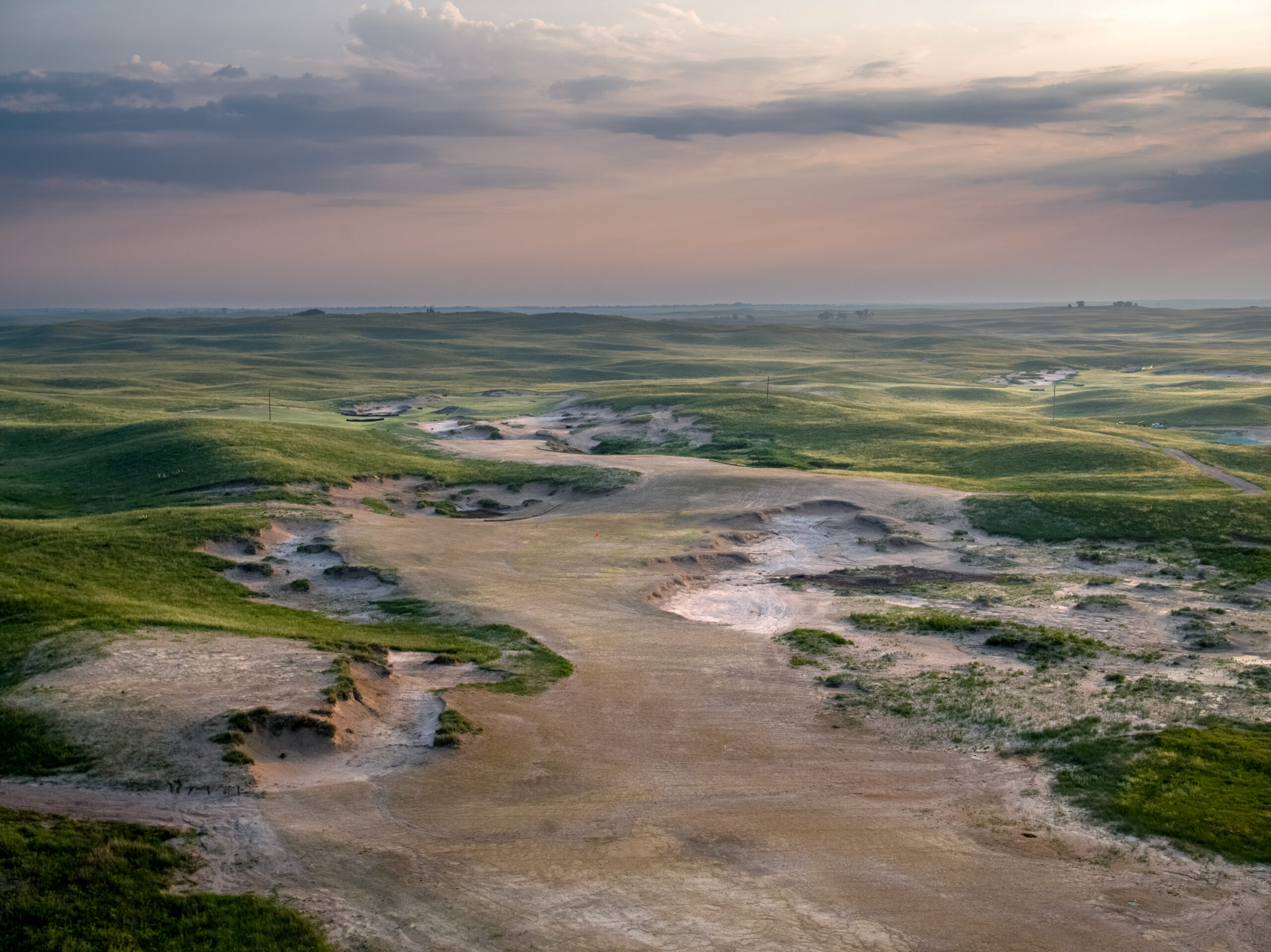
Hole 4
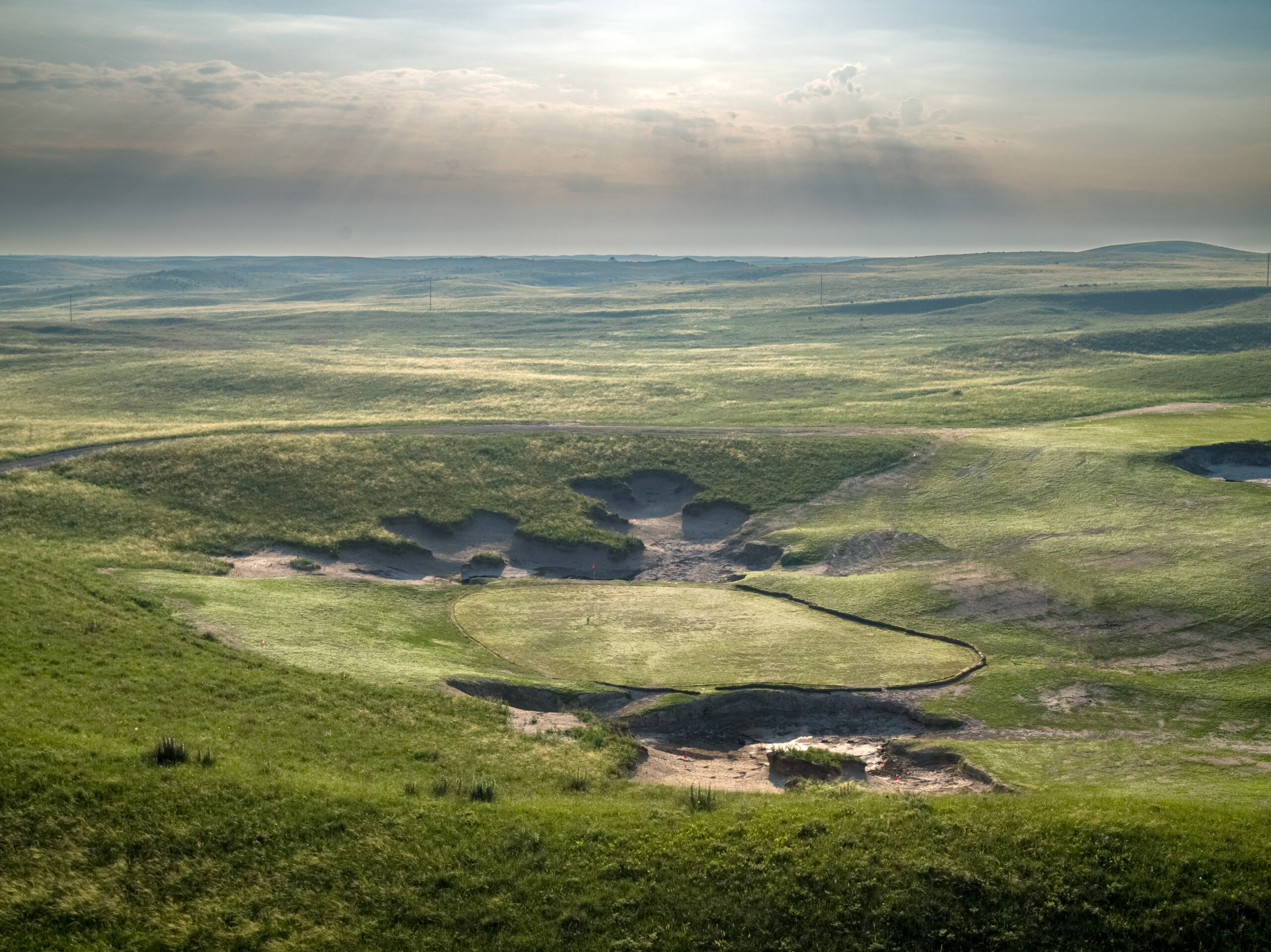
6th green
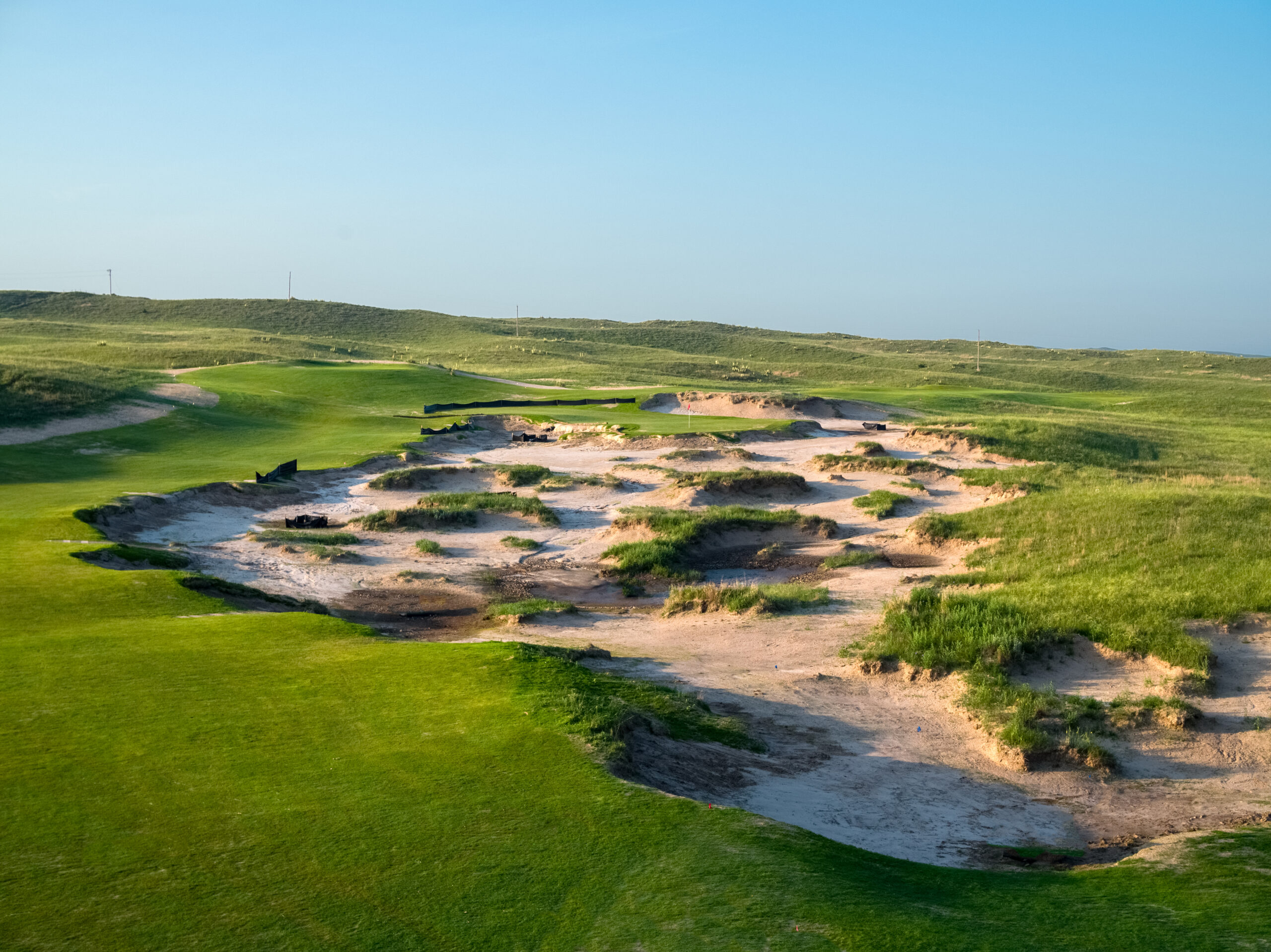
Hole 7
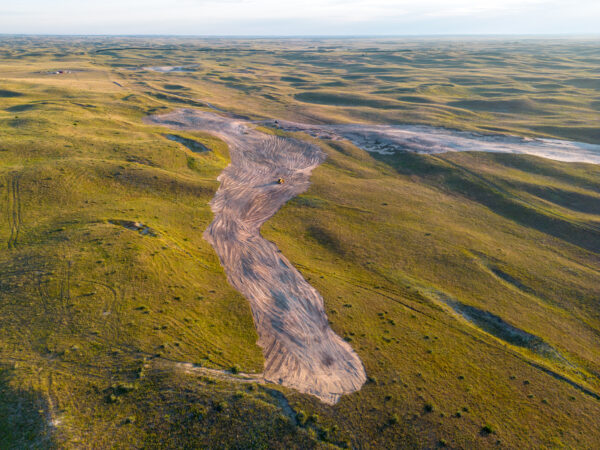
Hole 1
GrayBull will settle into this landscape and adopt another key aspect of Scottish links courses: fescue grass fairways and approaches. The hardy grass is liable to turn brown in the summer, which may come as a shock to those more used to the vibrant green of well-watered courses, however the fescue remains alive and is a contributing factor to the firm and fast playing style that is so beloved.
McLay Kidd is happy to be adding his own design to this area of the world, saying, “This site, it’s like the Goldilocks thing: not too flat, not too steep. It’s kind of in a bowl that looks inwards, and there are no bad views. It’s wide open, no big roads, no visual contamination—ticks all the boxes.” In addition to the new golf course on world-class land, there will also be 15 four-bedroom cottages for guests, alongside ample practice facilities.
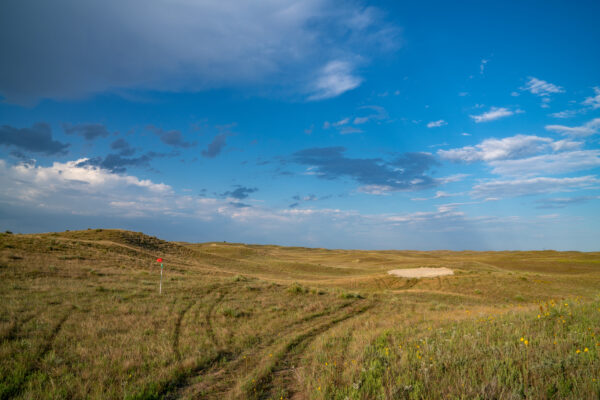
Planning out the green sites at GrayBull
This new course will mark another step forward into the spotlight for golf in Nebraska. Although course development is slower than it would in a state such as Florida, Nebraska benefits from its vastness and the quality of its land, which harkens back to the beloved links of the British Isles. With the sheer size of the Sandhills region, there is nothing to stop many more world-class courses being developed in the Cornhusker State.
David McLay Kidd, in an interview with Links magazine, said, “GrayBull and, indeed, the whole of the Sandhills region, is, as the name suggests, all sand. And the dunes were blown in by the elements over centuries. That’s precisely the same building blocks as the best and most ancient of Scotland’s links. In Nebraska though, we’re not talking about narrow stretches of incredible, golfable dunes, but thousands of square miles of them.”
If any intrepid developer wants to have a look in the Sandhills, it is safe to say the golfers will make the journey.




